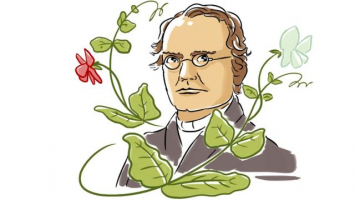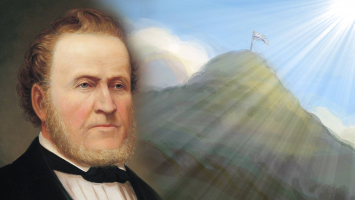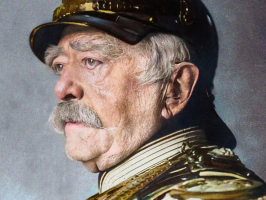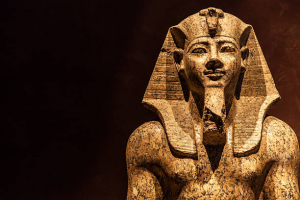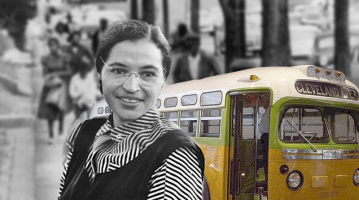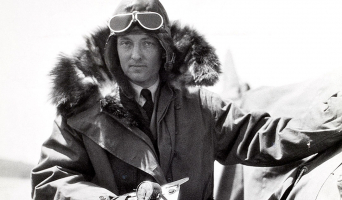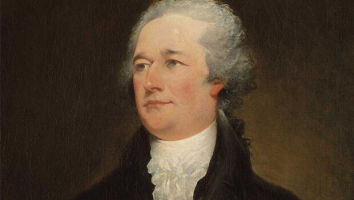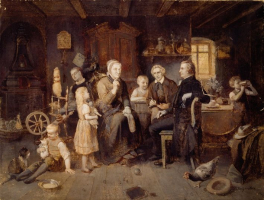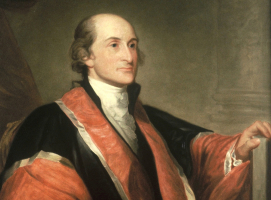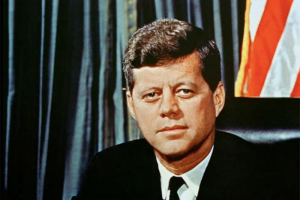Top 5 Facts about Nathanael Greene
During the American Revolutionary War, Nathanael Greene served as a major general in the Continental Army. After the war, he had a reputation as General George ... read more...Washington's most capable and dependable officer, and he is renowned for his effective leadership in the war's southern theater. To know more about him, Toplist will provide you some facts about Nathanael Greene.
-
The first fact in the list of facts about Nathanael Greene is that he came from a Quaker family. Greene was born on Forge Farm near Potowomut in the Warwick Township of Rhode Island, which was then a part of British America, on August 7, 1742. He was the second child of wealthy Quaker farmer and merchant Nathanael Greene Sr. and Mary Mott. John Greene and Samuel Gorton, two of the original founders of Warwick, were the ancestors of Greene. Greene was one of six children born to Nathanael and Mary, and he had two older half-brothers from his father's first marriage.
Despite their tremendous income, his father's religious convictions prevented him from receiving a very excellent education at first. Greene's father forbade reading, as well as dancing and other pursuits, because of his religious convictions. In spite of this, Greene persuaded his father to pay for a tutor, who helped him study math, the classics, law, and numerous texts from the Age of Enlightenment. Greene developed a small lump at some point in his boyhood that he would carry with him for the rest of his life. Greene was able to study the classics, algebra, law, and writings from the Age of Enlightenment as a result.
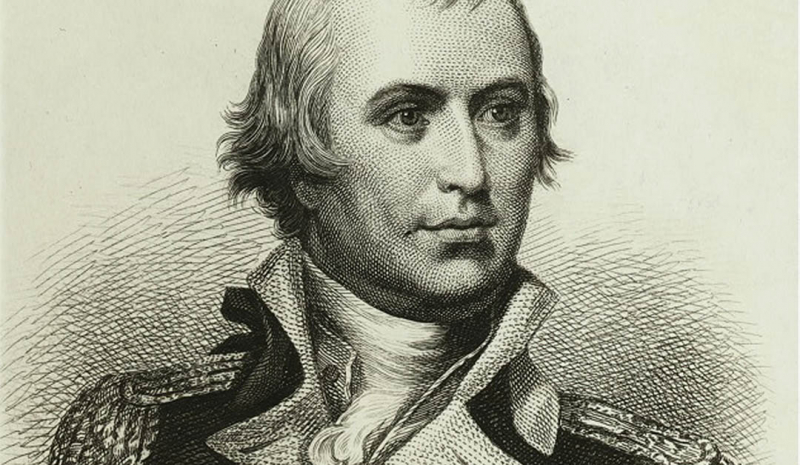
Photo: American History Central 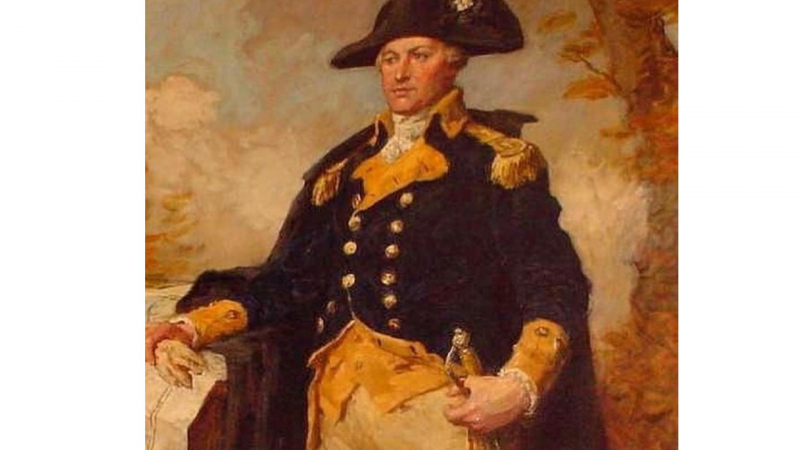
Photo: The Famous People -
Following the French and Indian War (1754–1763), the British parliament started enforcing new laws to collect money from British America to pay for the conflict that colonists had played a crucial role in starting. Following the seizure of a boat owned by Greene and his brothers by a British officer, William Dudington, Greene sued Dudington for damages, which was ultimately successful. In what came to be known as the Gaspee Affair, a Rhode Island mob set fire to Dudington's ship while the lawsuit was still ongoing. This infuriated the Americans, who eventually began to establish militias of dissident men all over the colonies. Greene assisted in the formation of the local militia known as the Kentish Guards, albeit he was unable to enlist because doing so would have required full health.
Following the Gaspee Affair, Greene's relationship with the British grew progressively more strained. At the same time, Greene began to stray from his father's Quaker beliefs, and in July 1773, he was expelled from Quaker gatherings. Greene assisted in the formation of the Kentish Guards, a neighborhood militia, in 1774, following the adoption of tax-raising laws that colonists mocked as the "Intolerable Acts." Greene was passed up for a position as an officer in the militia due to his limp.
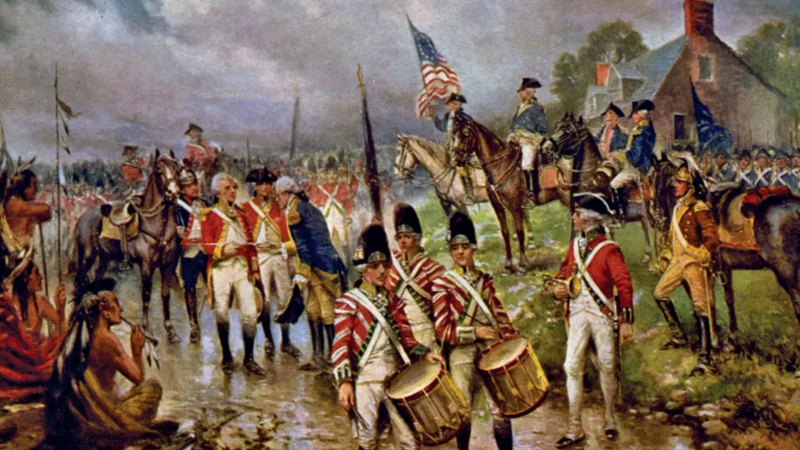
Photo: Ecynclopedia Britannica 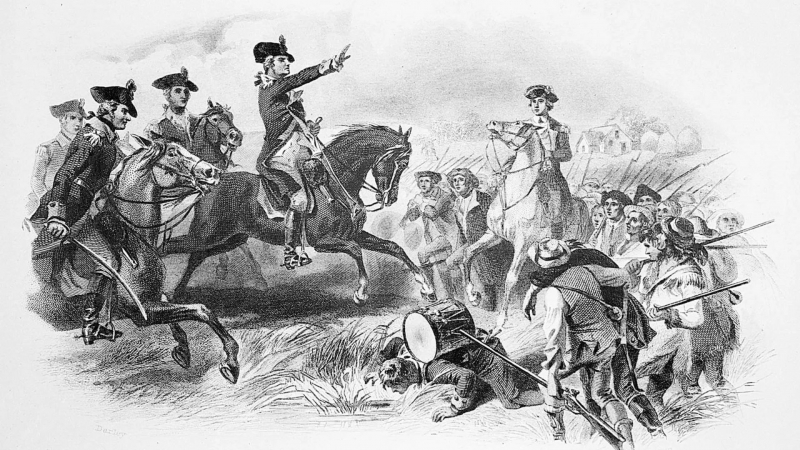
Photo: Encyclopedia Britannica -
When George Washington arrived outside of Boston to assume command of the Patriot soldiers, Greene was there to greet him. Throughout the disastrous wars of 1776, Greene's dedication was constantly demonstrated by the supply depots he strategically constructed along the army's expected route through New Jersey, which held the army together and allowed for the Trenton counterattack. His sole error was choosing to increase the garrison at Fort Washington instead of evacuating it as Washington had requested.
Greene was one of the few individuals that George Washington entirely trusted once the conflict started and he established his reputation in the Revolutionary army. Before moving on to other conflicts, he was initially in charge of the troops at Long Island, New York. Greene said that Washington's confidence in him allowed for the defense of Fort Washington on Manhattan Island and Fort Lee on the other side of the Hudson River against a British invasion. He reinforced them in the hope that they could fend off the British troops, but they ultimately failed. Despite this oversight, Washington's confidence in Greene did not wane, and he was appointed the Army's quartermaster general, which meant that he was now in charge of maintaining the proper amounts of supplies at the front. This is an intriguing Nathanael Greene fact. That's all about the third fact about Nathanael Greene Toplist want to share with you!

Photo: Amazon.com 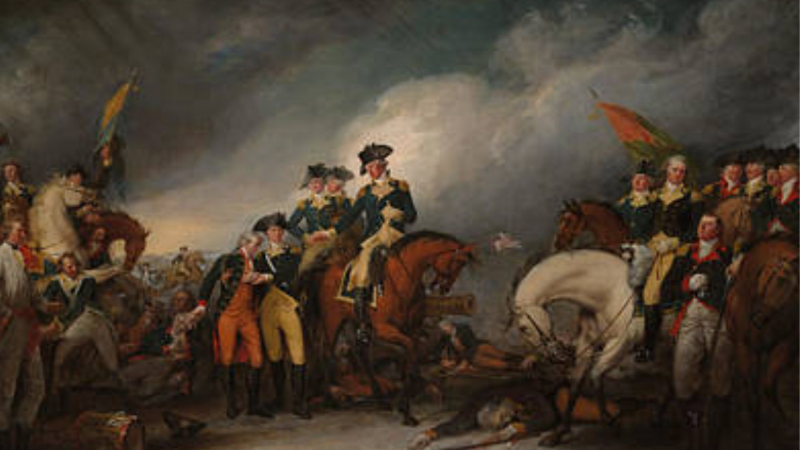
Photo: Fine Art America -
Greene fought bravely and cleverly against British rule in the South. Although Greene was aware that his army was incapable of winning any significant or decisive engagements, he made use of the tiny number of his soldiers to launch surprise and fleeting assaults on the visible and slowly moving British army. A large British army that had taken over significant portions of Georgia and South Carolina, as well as a sizable number of Loyalist militias in the southern states, were the first obstacles he had to overcome. In order to irritate the British, Greene decided to engage in guerilla warfare and used riverboats and cavalry.
He also risked splitting up his army, which made Cornwallis do the same. Greene was aware that such a decision would have serious ramifications for the British and significantly weaken them. Then he ordered his troops to flee, forcing Cornwallis to pursue the American army far from the British supply base in Charleston, South Carolina. The plan was to outmaneuver the greater army because he lacked the supplies and manpower to engage them in a direct conflict. The British army lost its power as a result of these strategies. He was also renowned for his clever retreat, which enabled him to defeat the British force.
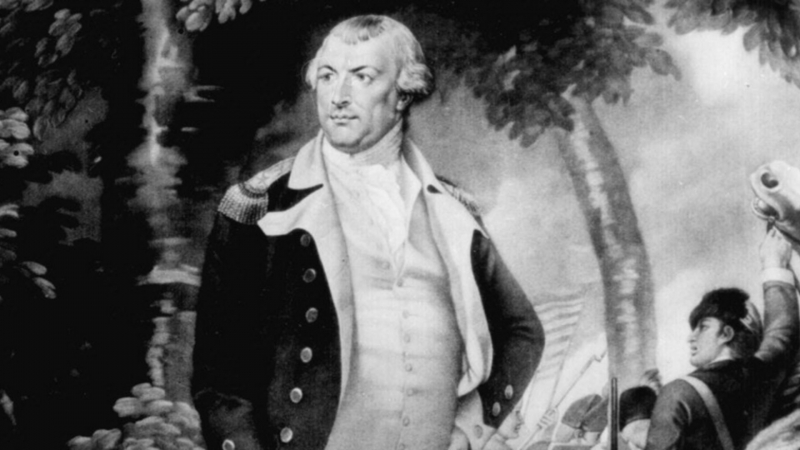
Photo: American Battlefield Trust 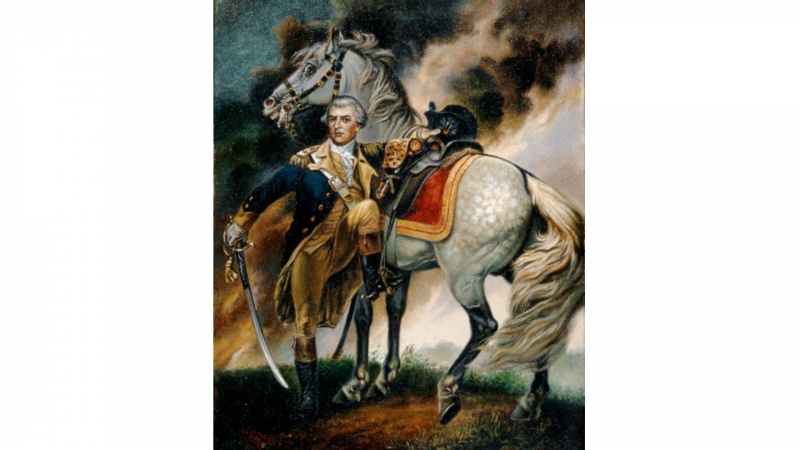
Photo: Werner Willis Fine Art -
The next fact about Nathanael Greene is that his final years were very different from the fighting years. Greene left his commission and went back to Newport. He moved to the South to concentrate on the slave estates he had been given during the war because he was in a lot of debt, and he set up residence at the Mulberry Grove Plantation outside of Savannah. Greene agreed to attend the Society of the Cincinnati's inaugural meeting in 1784 but turned down assignment to a commission entrusted with negotiating treaties with Native Americans. He afterwards joined the Cincinnati Rhode Island Society as a founding member.
It's interesting to note that Greene's debt stems from his time in the military, when he agreed to sign a bond for army supplies when his army needed them. Greene eventually had to pay off his loan on his own years later because the US government never did. The ongoing legal ramifications and associated debt persisted for years before being resolved only in 1854.
Greene became ill on June 12, 1786, and on June 19, 1786, he passed away at Mulberry Grove at the age of 43. Sunstroke was listed as the official cause of death. His ashes were buried with John Maitland, his bitter enemy in the fight, at the Graham Vault in Colonial Park Cemetery in Savannah for more than a century. Asa Bird Gardiner, the president of the Rhode Island Society of Cincinnati, worked to have his bones transferred to a memorial in Johnson Square in Savannah on November 14, 1902. When it was platted in 1799, Greene Square, which is located about a third of a mile southeast of Johnson Square, was given his name.
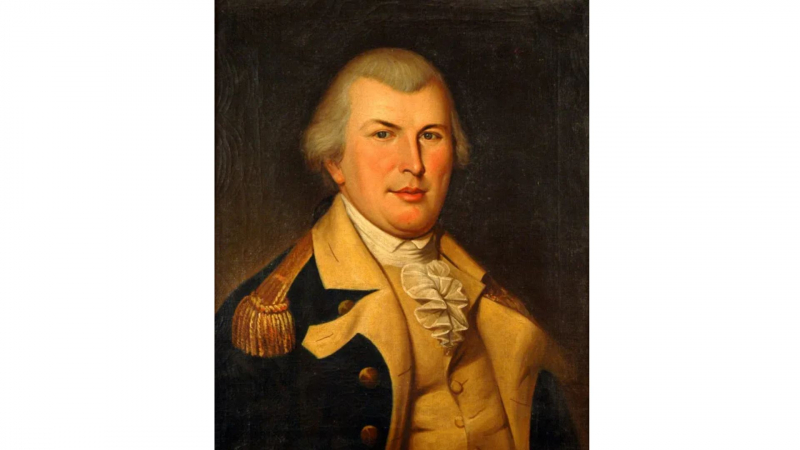
Photo: The Providence Journal 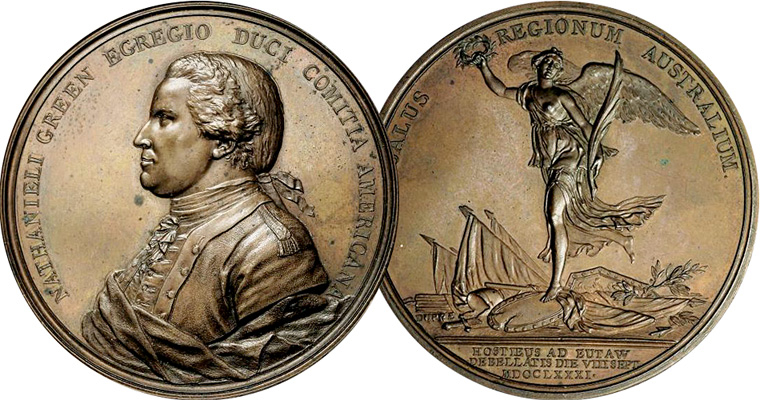
Photo: CoinQuest







